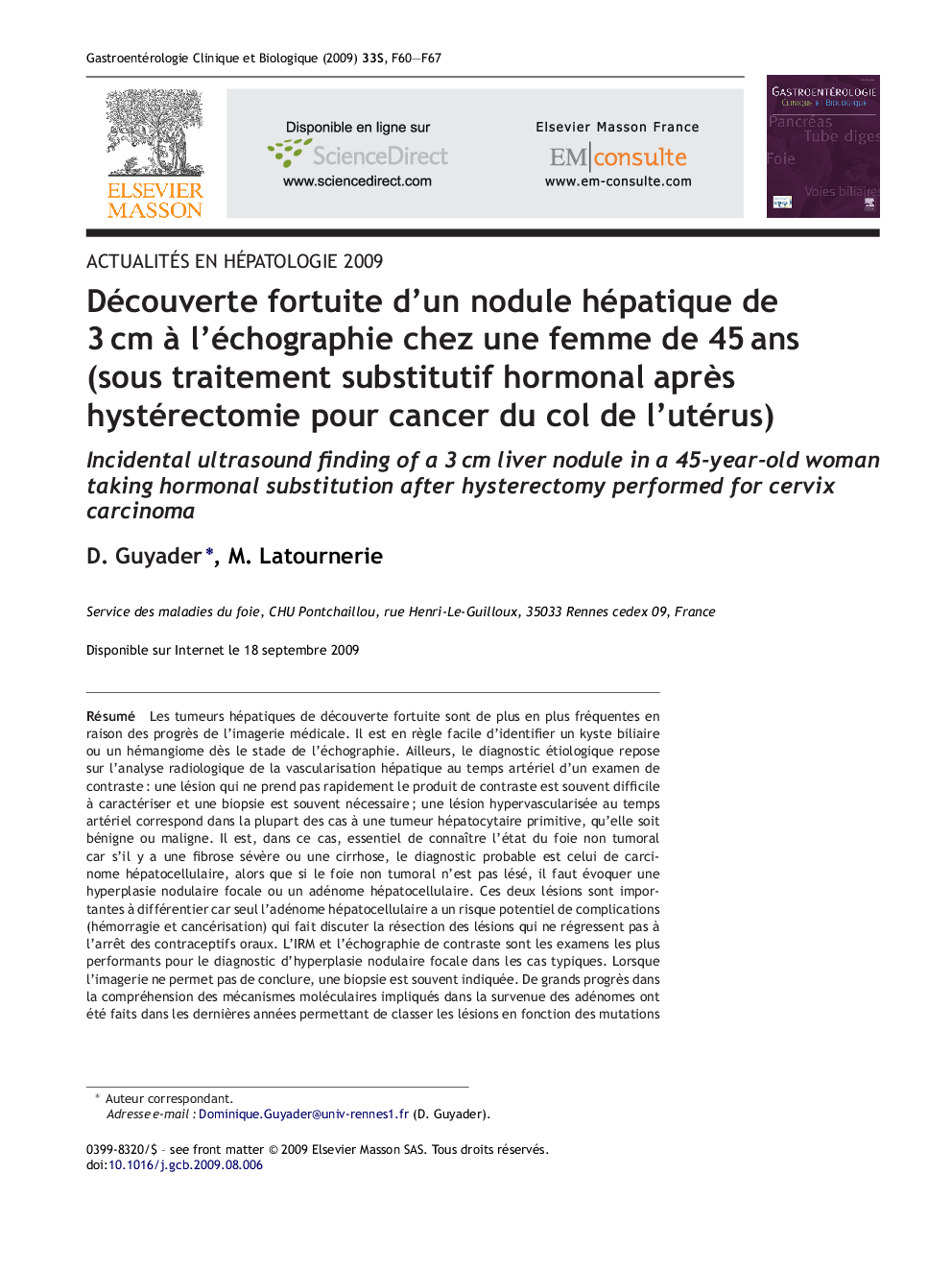| Article ID | Journal | Published Year | Pages | File Type |
|---|---|---|---|---|
| 3290392 | Gastroentérologie Clinique et Biologique | 2009 | 8 Pages |
Abstract
Incidental liver nodules are more and more frequently encountered because of increasing sensitivity of recent imaging techniques. The identification of biliary cyst or hemangioma is usually easy. In other cases, the etiological diagnosis relies on careful radiological analysis of the pattern of the arterial phase enhancement following contrast medium injection. When there is no early arterial enhancement, a liver biopsy is usually indicated to establish the diagnosis. A strong arterial contrast enhancement pattern is indicative of hepatocellular tumor, benign or malignant. In this situation, it is crucial to establish if there is underlying liver fibrosis. In case of cirrhosis, the diagnosis of hepatocellular carcinoma is the most probable. If the non tumorous liver is normal, focal nodular hyperplasia and hepatocellular adenoma should be differentiated. The distinction between these two tumors is important because only hepatic adenoma carries a significant risk of complications (bleeding or hepatocellular carcinoma) leading to surgical resection of lesions that do not regress after steroid withdrawal. Contrast enhanced MRI and contrast ultrasound are most useful tools for the diagnosis of nodular regenerative hyperplasia but liver biopsy can be necessary in atypical forms. In recent years, the understanding of molecular mechanisms associated with adenoma occurrence allowed for the proposal of a new classification already of practical interest in the management of patients.
Related Topics
Health Sciences
Medicine and Dentistry
Gastroenterology
Authors
D. Guyader, M. Latournerie,
